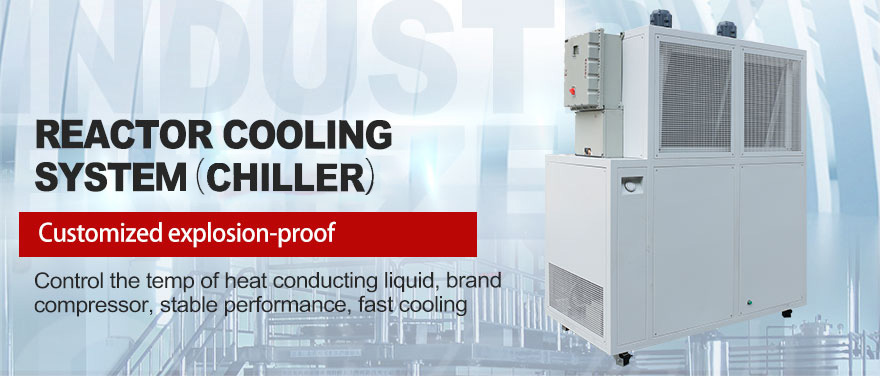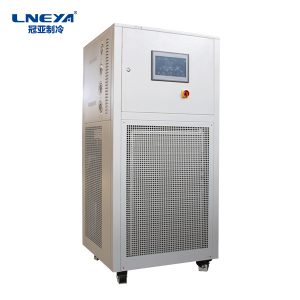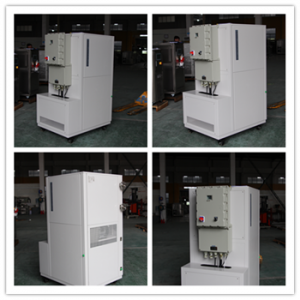From what aspects should we consider the use of circulating coolers?
Circulating coolers are a popular choice for temperature-critical applications because they provide stable temperature control, constant flow and constant pressure control. Many process heating systems require cooling and heating. For example, many conveyor heating zones have cooling zones. Injection molding requires a lot of heat dissipation. And the reactor is usually jacketed with cold water. There are many ways to cool this type of system, including tap water, tower water, building chilled water, and circulating coolers.

Circulating coolers are a popular choice for applications with strict temperature requirements. They provide stable temperature control-usually within 0.1°C, and provide constant flow and constant pressure control. They can be cooled to below ambient temperature, and when equipped with a heater, they can be kept above ambient temperature.
There are a variety of recirculating cooler products in the industry, manufacturers and options to choose from, choosing the right system for your application can be a challenge. However, there are three main considerations:
First, you need to define basic cooler requirements, such as capacity, coolant temperature, coolant and flow rate. Second, you need to determine which additional options are needed, such as heaters, auto-start functions, filters, alarms, and communication functions. Finally, you should consider other details such as noise level, size, warranty, and after-sales service and support.
Coolant flow and pump options. Most chiller manufacturers offer a choice of pumps with chillers. Positive displacement pumps are popular because they provide constant flow regardless of the pressure drop across the system. One of the disadvantages is that they need to be replaced regularly. Centrifugal pumps have a longer service life, but because the flow rate depends on the pressure drop across the system, they may not be suitable for applications with high pressure drops. Turbo pumps have the reliability of centrifugal pumps, but can provide greater pressure drop. To choose the right pump, you first need to consider the required flow rate and pressure drop in the system. Then, if there is more than one type of pump that meets your requirements, you should choose based on factors such as maintenance and cost.
Choose the right coolant. Most standard models of chillers can treat ordinary distilled water or tap water as a coolant. It may be necessary to add additives such as algaecides to prevent algae growth. For set points below 10°C, it is recommended to use a mixture of glycol and water to lower the freezing point of the fluid. (Another advantage is that adding glycol can inhibit corrosion and algae.) Using a mixture of glycol and water will affect the cooling capacity of the cooler because it does not transfer heat like pure water. If your application requires, most chiller manufacturers also provide options for deionized water and high-purity application systems.
When choosing a cooler, some other considerations may be important for your application. If people are going to work near the chiller, you may need to consider the level of noise it generates, as this will vary between manufacturers.
(The above content comes from network data, if you have any questions, please contact to delete.)
Related recommendations
-
Temperature control range and accuracy of high and low temperature tester
1078The temperature control accuracy of heat transfer oil medium of the high and low temperature tester used for component testing is plus or minus 0.5 ℃, which solves the problem of temperature control lag in electronic components. Main advantages of...
View details -
How to Choose Chiller and Injection Moulding Machine?
1179A. First way:The 1HP water-cooled chiller can be equipped with 80 tons locking force injection moulding machine, and the temperature can be controlled at 5-10 degrees.The 1HP water-cooled chiller can be equipped with 100 tons mould-locking force i...
View details -
LNEYA precision test thermostat system design instructions
1086The lapping test thermostat is a device that is used to control the temperature of various semiconductors in the chip industry, and its temperature range is controlled to test its performance. Therefore, the lapping test thermostat system can have...
View details -
Principle analysis of operation of refrigeration heating circulator
1191With the continuous development of technology, more and more refrigeration equipment has appeared in our lives, such as: refrigeration and heating circulators, in fact, they are not ordinary, are remarkable refrigeration equipment. The refrigerati...
View details
 LNEYA Industrial Chillers Manufacturer Supplier
LNEYA Industrial Chillers Manufacturer Supplier













